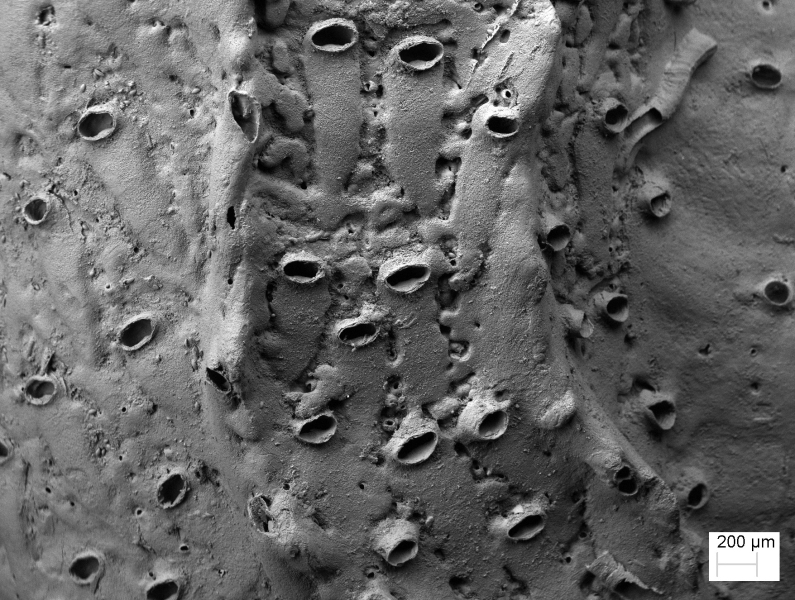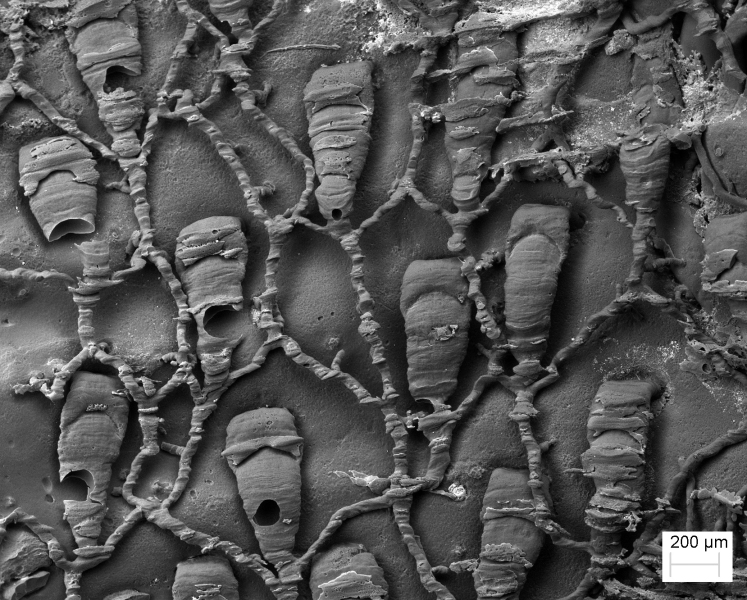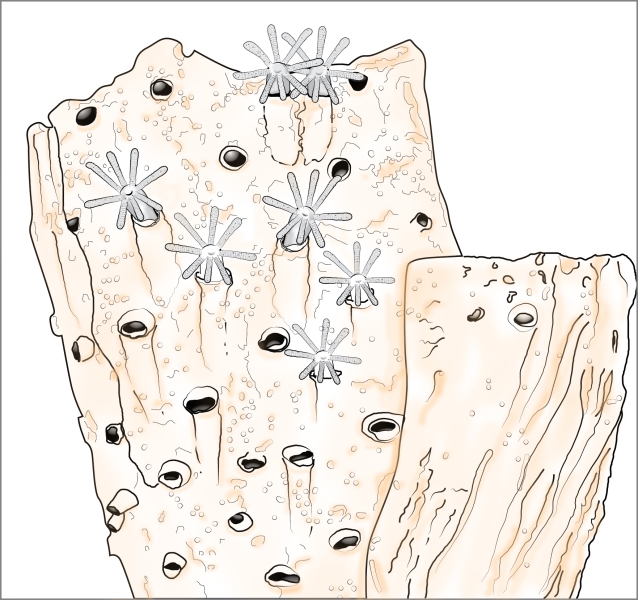A marine animal thought to have been extinct for four million years has been found alive and well and living near Picton.
Called Protulophila, this new “living fossil” forms a network of tiny holes in the chalky tubes of marine worms called serpulids.
Fossil examples were discovered this year by a group of scientists including NIWA marine biologist Dr Dennis Gordon, Dr Paul Taylor of London’s Natural History Museum and Drs Lee Hsiang Liow, Kjetil Voje and Seabourne Rust of the University of Oslo. The scientists had been conducting fieldwork at Wanganui where they found Protulophila in a tubeworm from geologically young rocks less than a million years old.
This discovery alerted them to the possibility that the animal, previously unknown outside of Europe and the Middle East, might still be alive today in New Zealand.
It was thought to have been extinct for four million years following a long geological history extending back 170 million years into the Middle Jurassic period in Europe.
Scientists then examined tubeworms stored in NIWA’s Wellington-based Invertebrate Collection and discovered examples of preserved Protulophila that had previously been overlooked. The tubeworms had been collected in 2008 in 20 metres of water near Picton.
Finding tiny polyps with tentacles protruding from the network of holes confirmed what paleontologists had suspected, that Protulophila is a colonial hydroid related to corals and sea anemones. It is best seen through a microscope.
According to Dr Gordon, living fossils are animals and plants with long geological histories but which are now rare or uncommon.
“Finding living Protulophila is a rare example of how knowledge of fossils has led to the discovery of living biodiversity,” he said.
“It’s very exciting. Our detective work has also suggested the possibility that Protulophila may be the missing polyp stage of a hydroid in which only the tiny planktonic jellyfish stage is known. Many hydroid species have a two-stage life cycle and often the two stages have never been matched. Our discovery may thus mean that we are solving two puzzles at once.”
The next step will be to collect fresh samples from Queen Charlotte Sound for gene sequencing.




